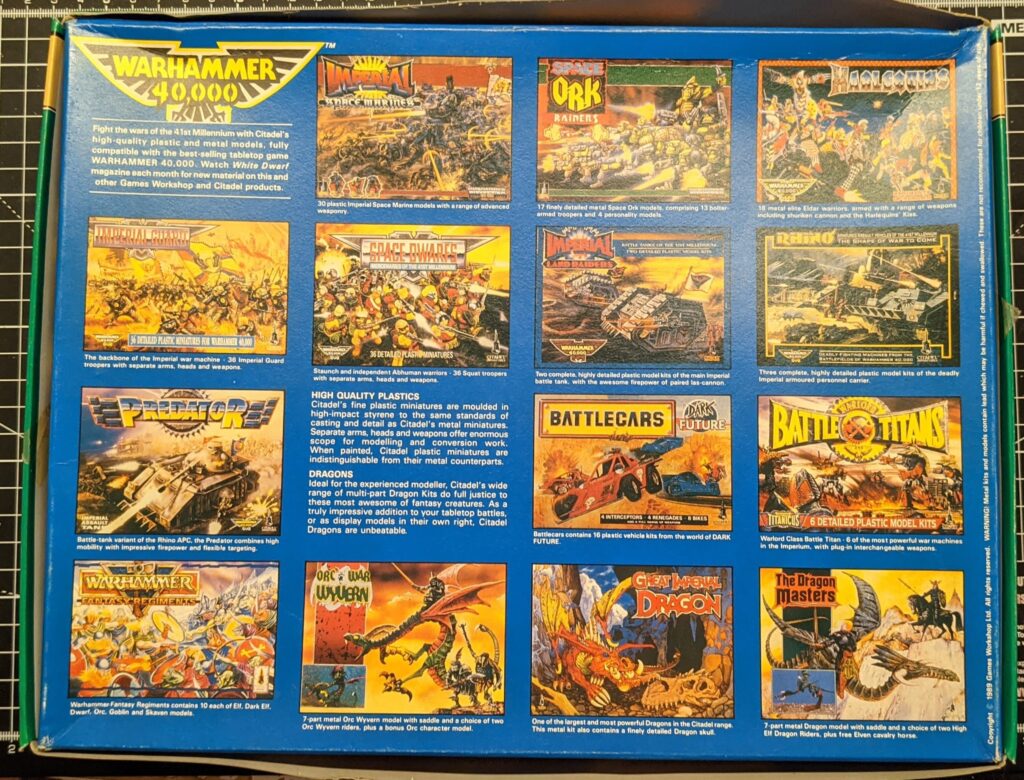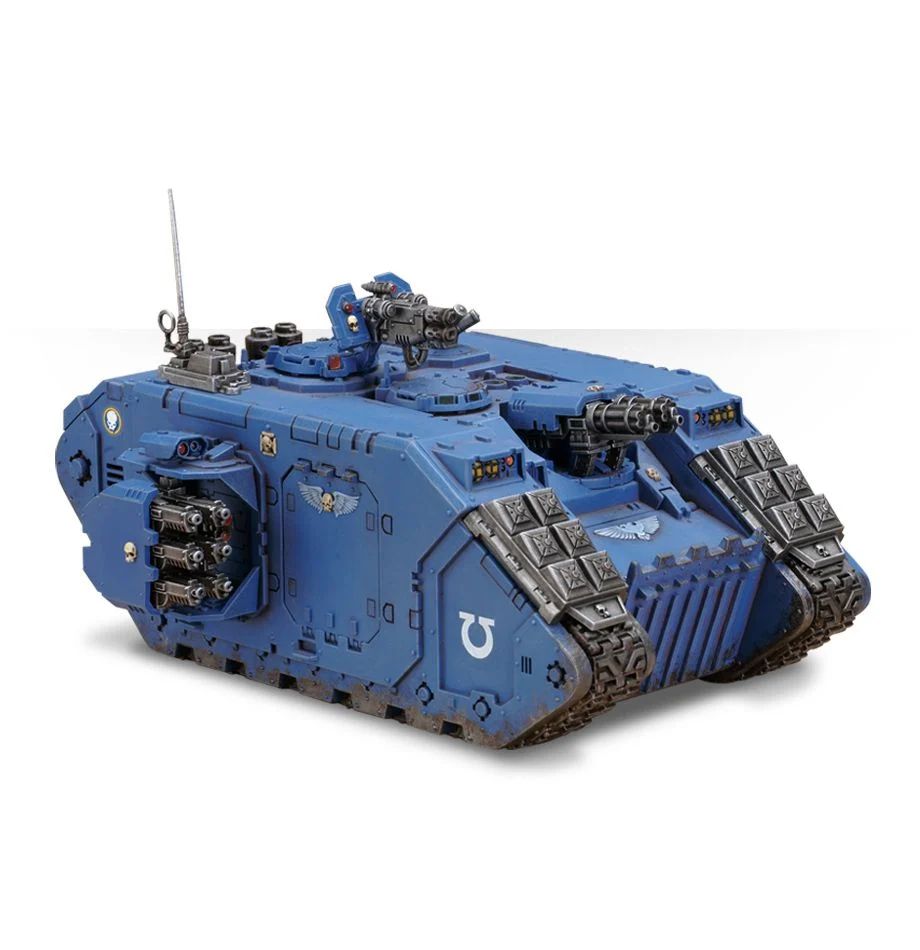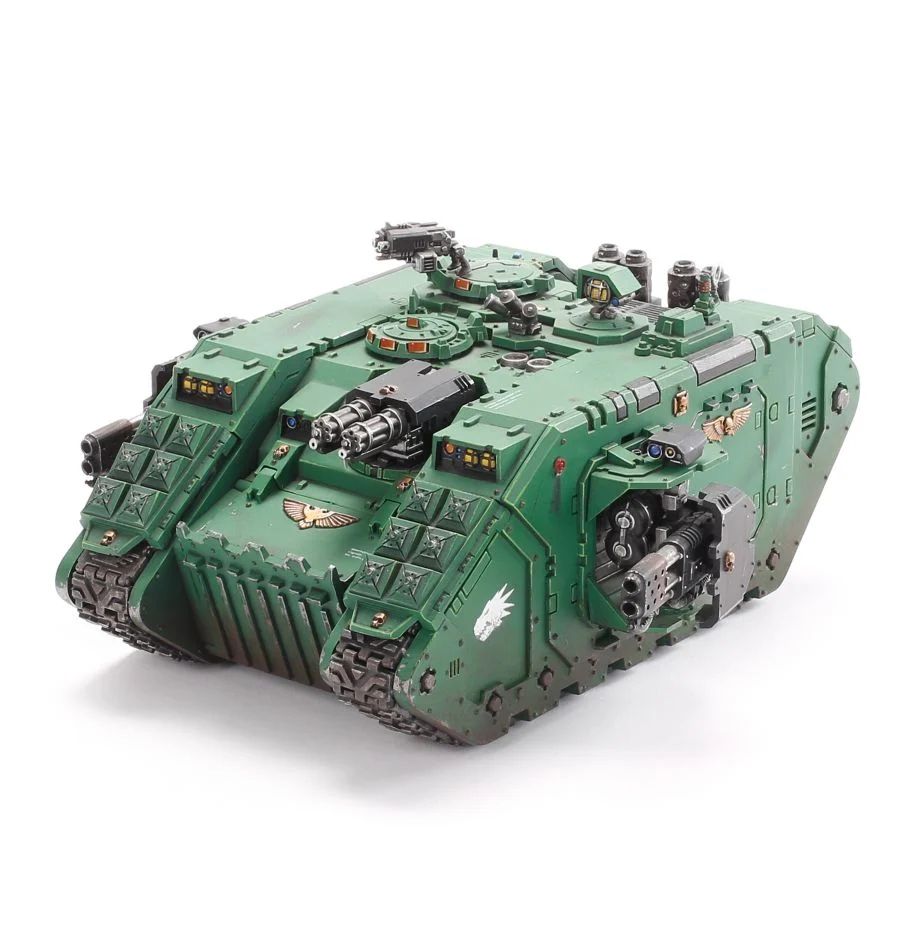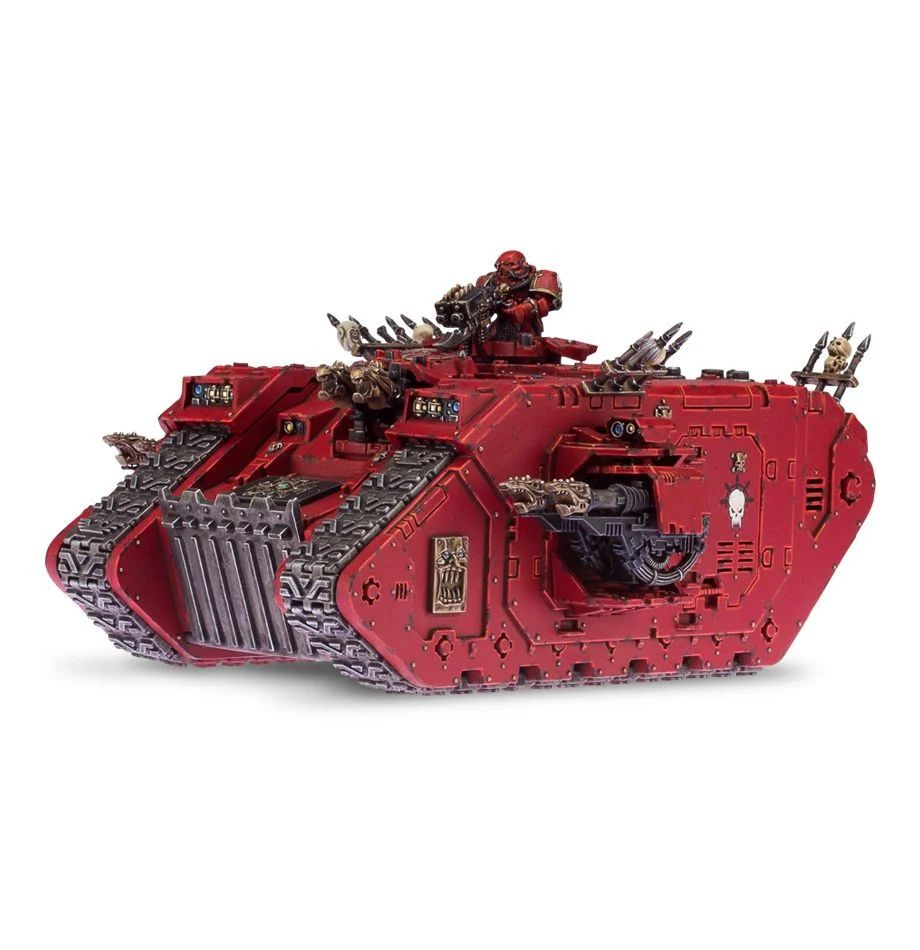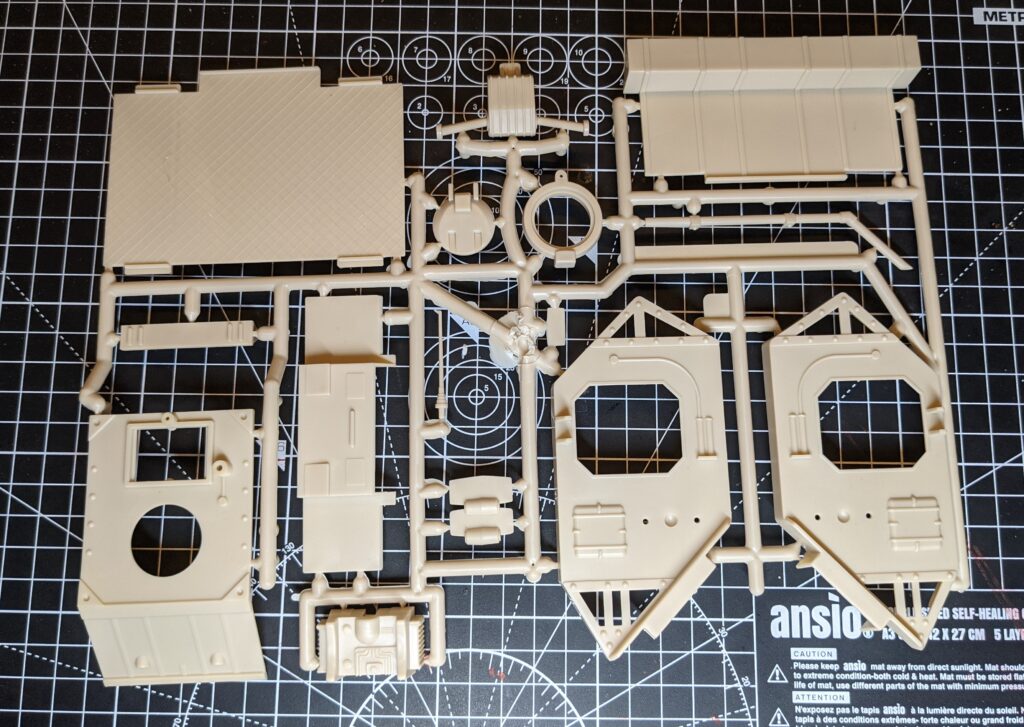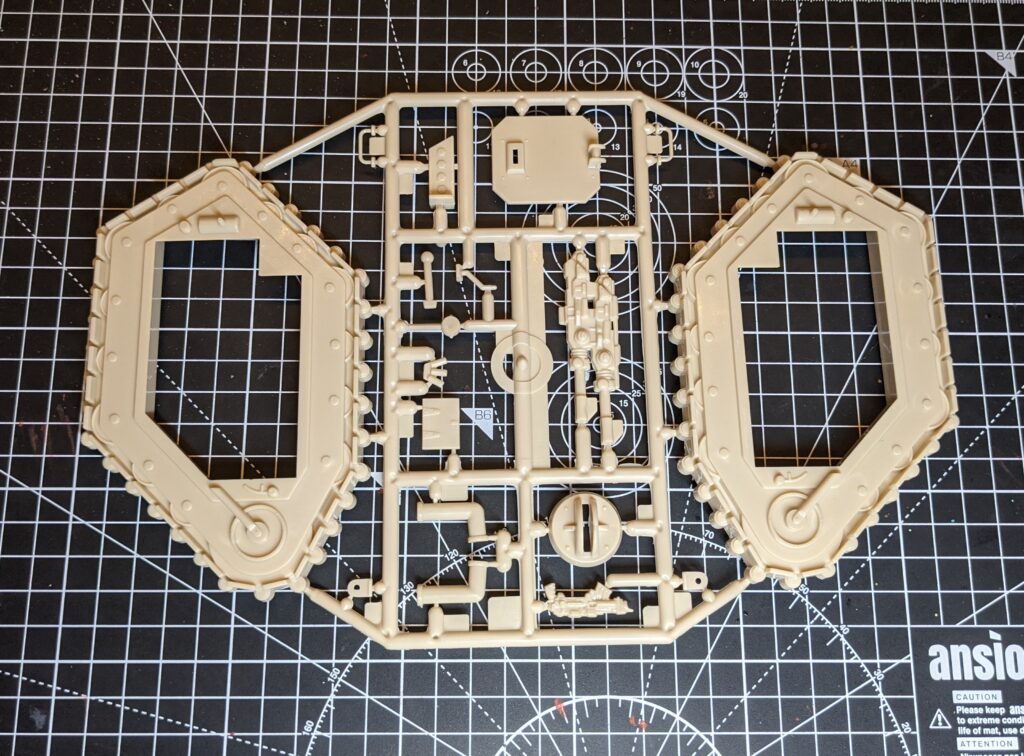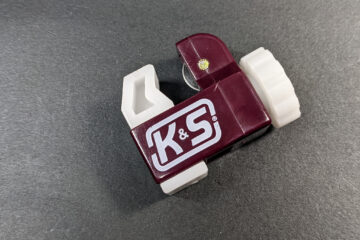One of the odd side effects of our current socially-distanced world has been the extra care required for previously mundane activities. Social distancing rules and sensible precautions have turned innocuous undertakings, such as buying models from a friend, into scenes reminiscent of evidence handoffs in so many second-rate spy flicks.
So it was one blustery Thursday afternoon that I found myself masked up at a familiar door, trying very hard to surreptitiously hand over a tightly-rolled collection of notes whilst also remaining 2 metres away. In exchange I was pointed toward a slightly battered green cardboard box waiting for me on the step. It was a very special box, one that I’d been admiring from afar for a long time.
This box:
That’s right, this is a new-on-sprue 1988 Land Raider from Games Workshop! Drink in the raw history on display here. Marvel at the classic artwork, the soft lines of pre-digital media, the logos that have since been refreshed several times over. Ponder the questions you never knew you had, such as “won’t that tank just fall over backwards when it climbs a hill?” and “why did every single Space Marine on this box skip arm day?”. Imagine, if you will, the smell.
Over the next few weeks I’ll be assembling and painting this classic Citadel Miniature, bringing it into the 21st century with a view to adding it to my fledgling Horus Heresy Iron Warriors army.
Land Raiders – A Recap
Before diving into the kit, let’s take a moment to examine the options available to those of us who aren’t fortunate enough to know somebody who just happens to have a 33 year old new-in-box vintage Land Raider kicking around.
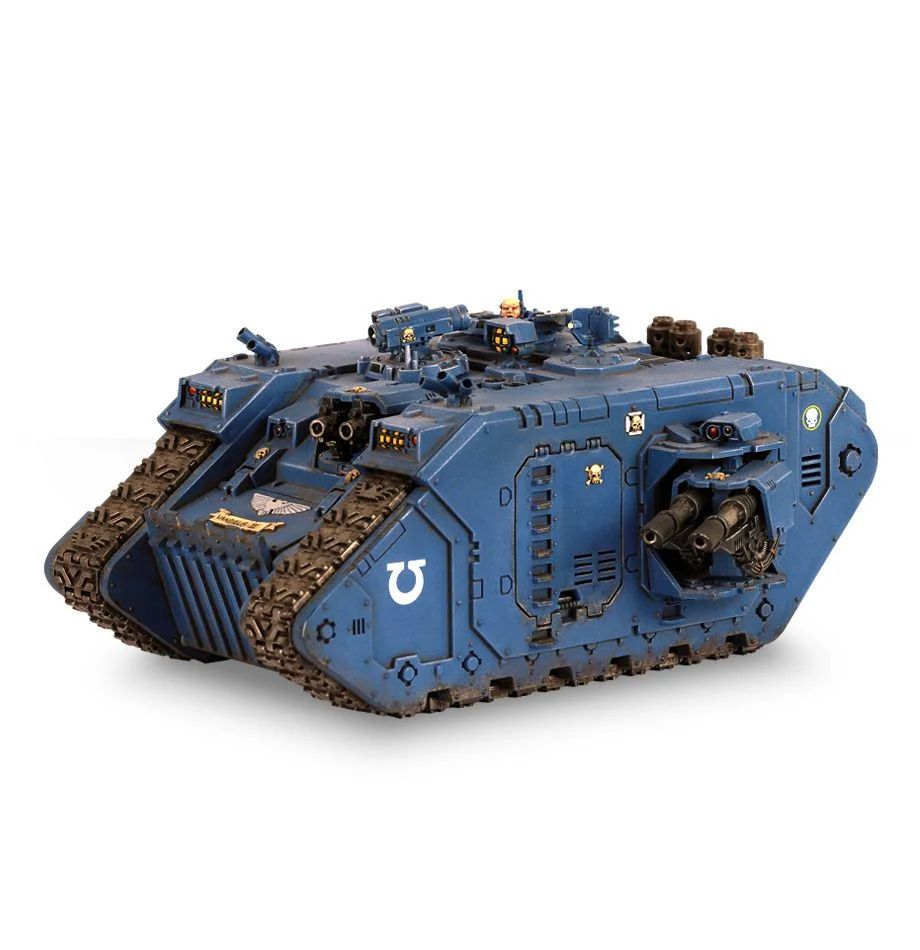
At the bottom end of the price scale we have the vanilla plastic offering from Games Workshop, the plastic “Mark III” Land Raider. Still reasonably long in the tooth having been originally released in 2000, this kit is outfitted with Lascannon sponsons and a twin-linked Heavy Bolter, as per the original template. The Land Raider is also available in three variant flavours: Crusader (Hurricane Bolters and Assault Cannons), Redeemer (Heavy Flamers and Assault Cannons), and Chaos (Lascannons and Heavy Bolter again, but also spiky). The plastic kits will set you back £50-£60 RRP, depending on which you choose.
A functionally equivalent version of the tank is also available from Forge World in the Land Raider Mark IIB for £79, your extra £29 netting you a few cosmetic changes as resin additions to the plastic kit. The most significant of these is a new all-in-one sponson design that cunningly situates the side doors behind the deadly weaponry, an advanced tactic previously reserved solely for the servants of Chaos. If you’d rather save your pennies, this orientation is achievable with the plastic kit too – the sponsons can be mounted in either the front or rear position as standard.
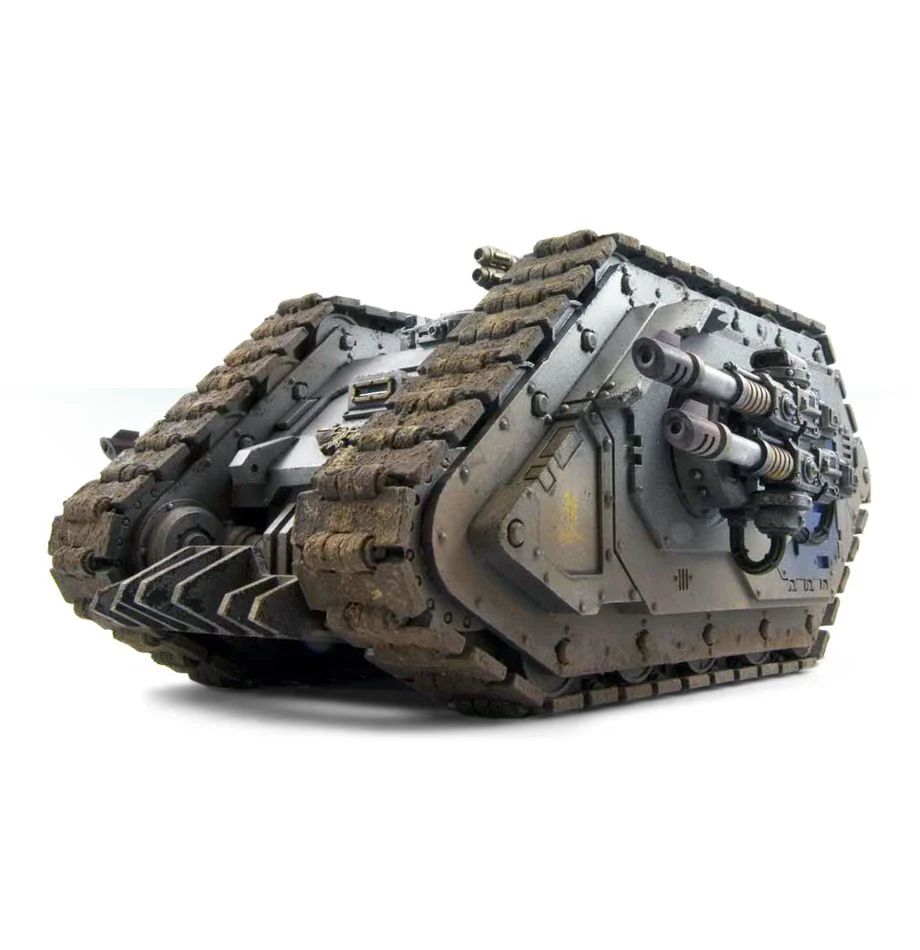
Up at the heady heights of £100 (or £104 for an up-armoured version) sits the Land Raider Proteus, Forge World’s resin reimagining of the classic Rogue Trader-era kit. It features a slightly elongated chassis, modernised weapons and engine detailing, and the general design enhancements expected with 25 extra years of design experience under the company’s belt, but it’s clearly a loving tribute to the original.
Which brings us back to my Land Raider. The chance to own a classic piece of GW history that would also be able to slot into my Heresy army using the rules for the Land Raider Proteus, for less money than the modern resin equivalent, all while rescuing a toy from the ultimate doom: languishing in a box, unloved except for its monetary value? Ultimately, that’s something I just couldn’t turn down.
The Build
Opening the box for the first time, I am immediately presented with a comfortingly familiar sight: a trio of hard plastic sprues, nestled atop a set of instructions and a transfer sheet. Sure, the sprue may be bone-coloured and round rather than the now ubiquitous grey trapezoid profile, but as a veteran of several GW kits perhaps I’m in for an easy ride after all.
This elation is quickly banished with my first sight of the instruction sheet: an A4 block of text, generously accompanied by three hand-drawn diagrams. No helpful coloured 3D instructions here, although it does feature a lovely section outlining some modifications that more experienced modellers might choose to undertake, some of which even appear in the example photos on the box.
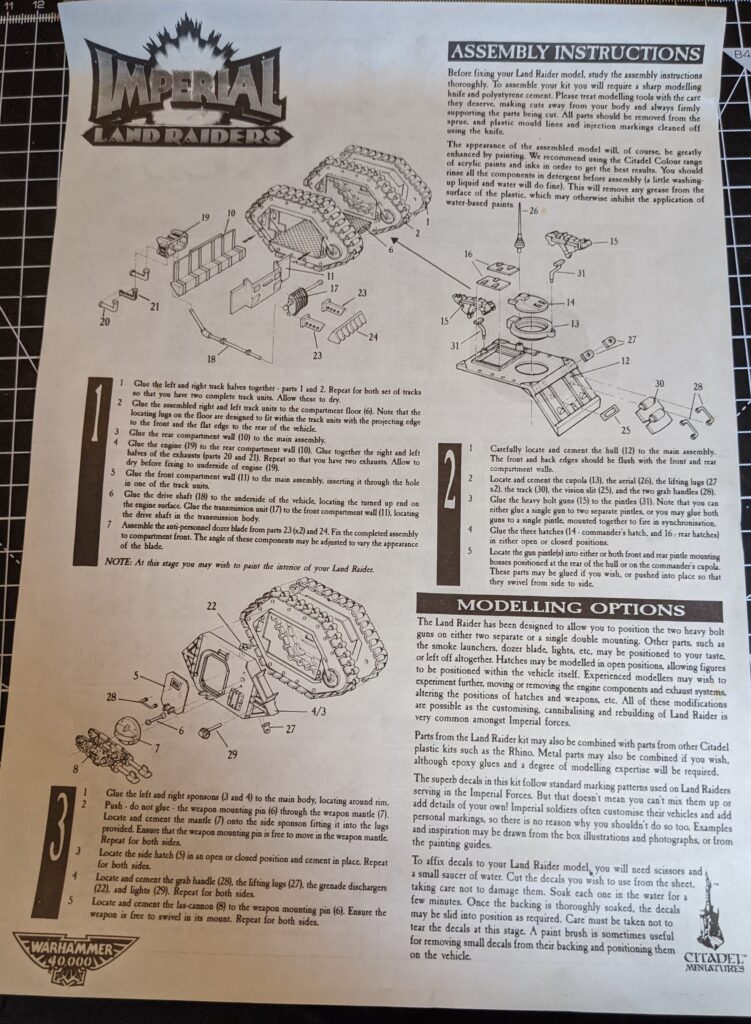
Ultimately, for all my initial concern the build proceeded pretty much like any other plastic kit, modern or otherwise. Pausing halfway through for some overnight coercion of slightly-warped parts under a stack of heavy books, the kit went together nicely with modern Citadel plastic glue, and just required a little filling and sanding to neaten up some seams in the track and hull assemblies.
I’d have to say that the most stressful part of the whole endeavour was clipping the parts from the sprues and tidying up with a scalpel blade – one slip here could mean hours of work trying to rescue out-of-print parts. Fortunately for all, treating a kit older than me with the reverence it deserves meant I got through it unscathed! Here’s the finished build – pre-filling, because I forgot to take a photo of that step:
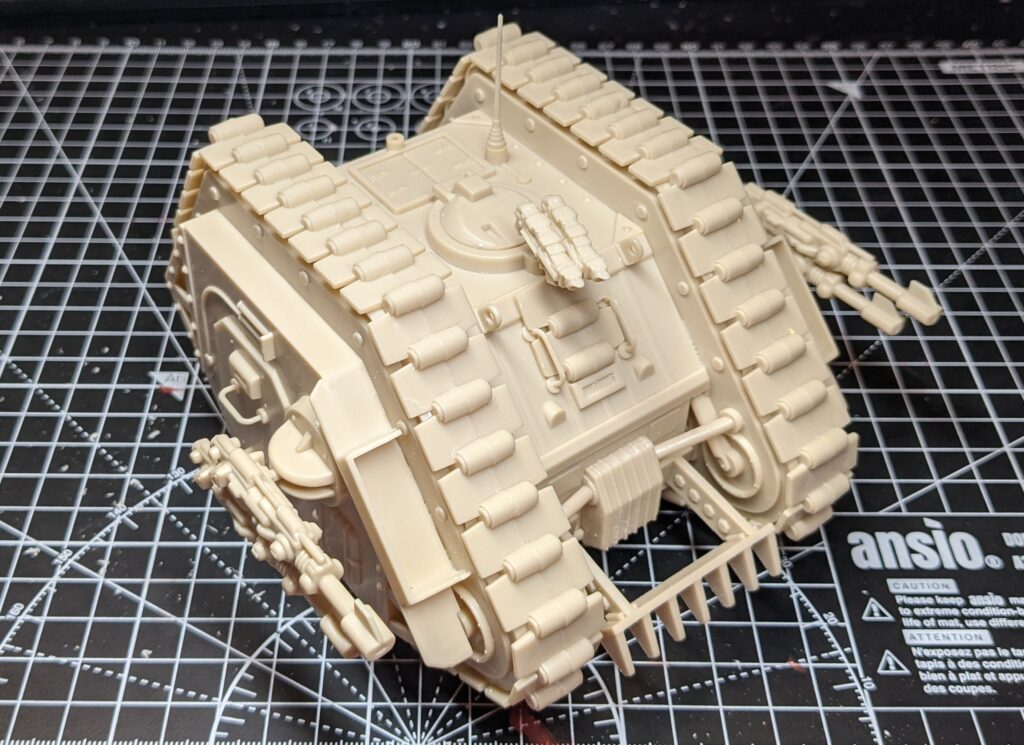
Overall, I’m very impressed with the kit. The weapons are evidently designs from a bygone era, but are still clear in what they’re representing on the battlefield, and it’s an impressive size, much larger than I initially expected. Here it is sat next to the battered shell of a modern Land Raider that’s been languishing on my shelf awaiting a refurb for altogether too long:
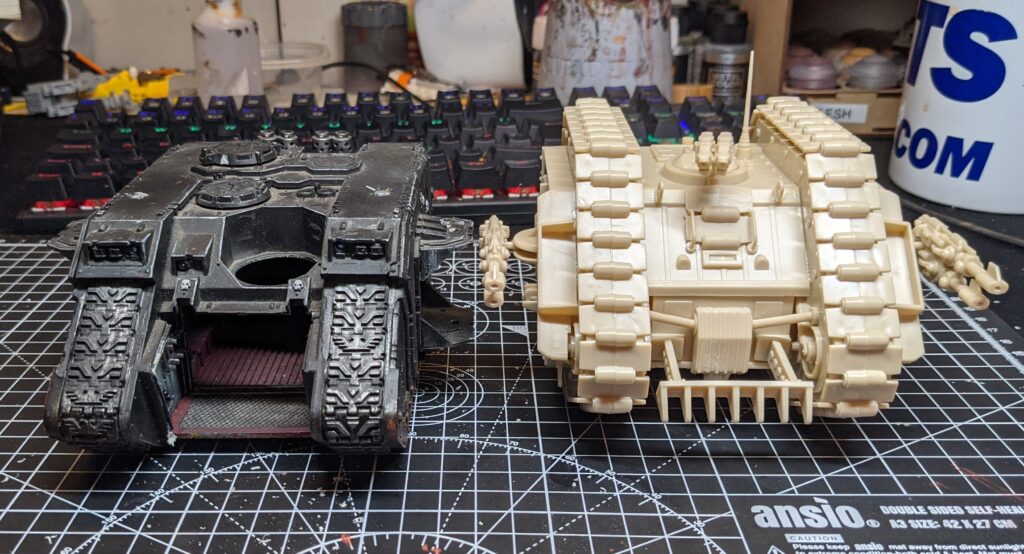
Prime Time
With the kit built, I decided to capitalise on the hobby momentum and get it primed as well. Before spraying, I liberally daubed the track components with Typhus Corrosion. My one real issue with the kit is that the individual track segments are very flat and smooth, so I am hoping that this will add some texture that I can build on through the painting process. I am going to paint this as part of my Iron Warriors army, so I primed the model black, which is a good base coat for the metallic-heavy scheme.
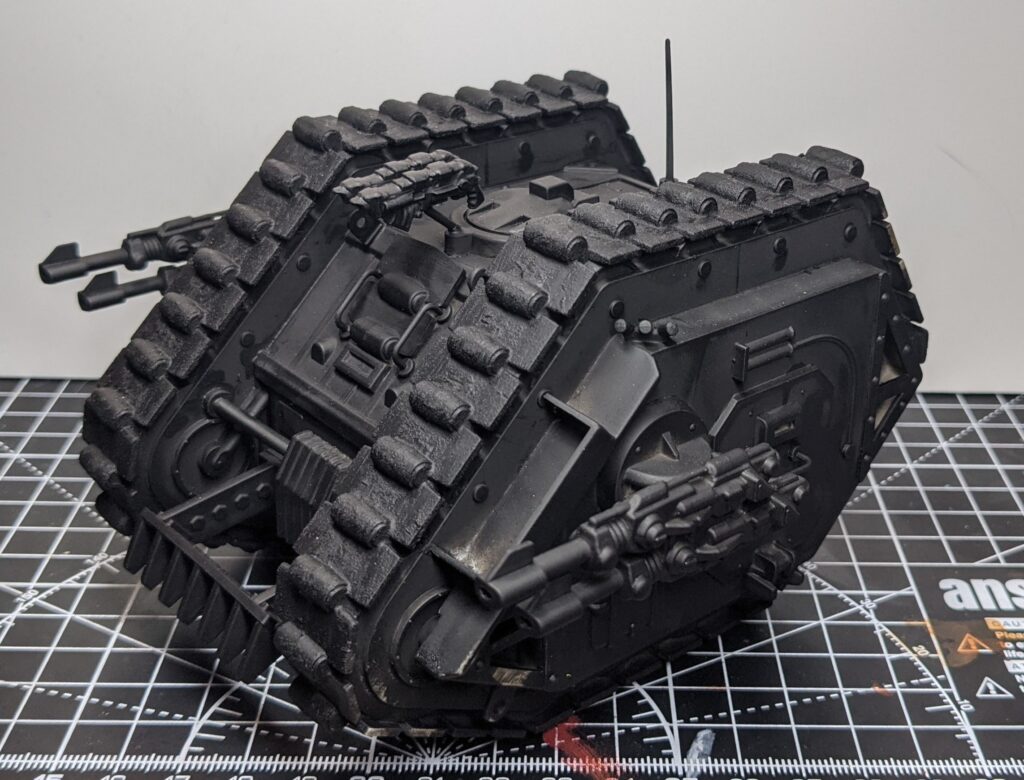
As you can see from the photo, the primer is a touch thin in places, despite going to the extra effort of washing the sprues pre-build. I’m hoping that this is more a symptom of my haste to get painting, rather than any issue with the primer coat itself.
And that’s where we’ll leave it for now! Join me for the next instalment, where I’ll be painting the Land Raider up in my established Iron Warriors scheme ready to carry scores of Terminators safely into battle.


